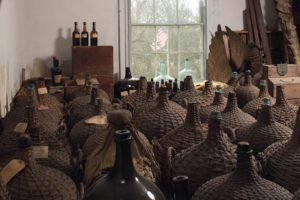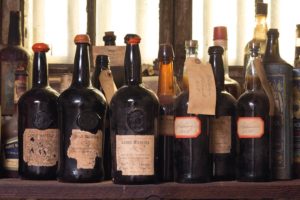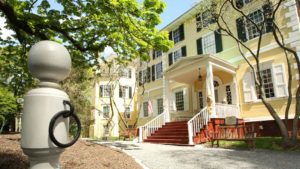Christie’s Auctions Collection of Madeira Discovered in Basement of Historic House
The highlight of Christie’s Finest Wines and Spirits auction on December 7 was a collection of incredibly rare and historic Madeira consigned from the Liberty Hall Museum in Union, NJ. The story behind the Madeira’s discovery is as compelling as the rarity of the wine itself. Recovered from behind a wall during renovation work at the historic house, the existence of the extensive collection was previously unknown.
The house was constructed in 1760 as a country getaway for the prominent New York lawyer, William Livingston. Livingston served in the First and Second Continental congresses, became New Jersey’s first elected governor, and also signed the United States Constitution. In 1811, the estate was purchased by Peter Kean, in trust for his mother Susan Livingston Kean Niemcewicz, Governor Livingston’s niece. Kean descendants continued to live on the property until 1995. The home was designated a National Historic Landmark in 1973 and is now part of Kean University.
The Director of Operations at Liberty Hall, Bill Schroh, describes the historic house as “50 rooms and lots of stuff in it.” A wine cellar that had not yet been properly inventoried was among those 50 rooms. The museum set out with a plan to catalogue the wine collection, an initiative that included removing a wall that they believed to have been built in the cellar during Prohibition. Several cases of Madeira from the late 18th century and approximately 40 demijohns from the 1820s were discovered on the other side. Madeira is a fortified wine made on the eponymous Portuguese islands off the coast of western Africa. In recognition of its stability on transatlantic voyages, Madeira was particularly popular in North America in the 18th and 19th centuries.
The Museum speculates that the wine had been stored inside wooden cases for about 100 years, with the wine being at least 200 years old. Inside the cases they found an extensive collection of bottles with their labels in exceptional condition for their age. As the wine was found in this outstanding state, and recognizing that Madeira has a long lifespan, Schroh commented “…as long as the cork is not wet and the wax seal… is not broken, there was a good chance that it might still be decent-tasting Madeira.”
Liberty Hall’s holdings included examples of Lenox Madeira, imported by Robert Lenox Esq. of New York City via Philadelphia in 1796 and bottled in the summer of 1798, as well as a demijohn of Old Sercial Madeira from 1846. The wines were catalogued under the expertise of Franscisco Albuquerque, Winemaker for the Blandy’s Madeira Wine Company, S.A., and Edwin Vos, Head of Wine at Christie’s. Albuquerque commented on the significance of the sale, stating, “This is a landmark moment, as this discovery not only represents one of the largest collections of early Madeira in the United States, it also signifies the timelessness and lasting quality of Madeira wine. These vintages are approximately 200 years-old and yet they still retain the nuanced qualities and notes found only in Madeira coupled with the finish of time.”



